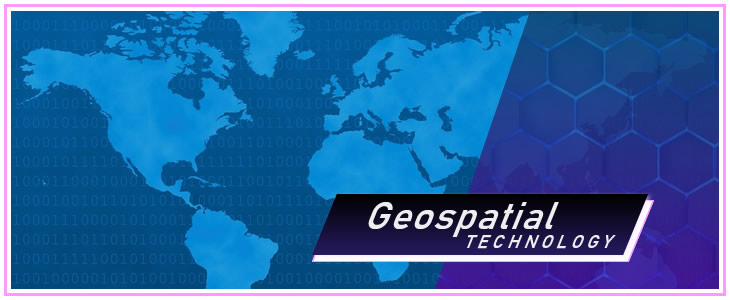Recently, private firms have beefed up Remote Sensing Training in Nigeria. At HagePlex, we feel proud delivering unmatched Remote Sensing Training in Abuja FCT. We are dedicated to promoting Remote Sensing outreach, education and research in Nigeria. Our systematic approach to Remote Sensing training is ideal has over the years, promoted our company’s objectives and goals. This approach ensures that training begins and ends with the needed learning expectations and outcomes.
Module One (Our Expectation Guide to our Remote Sensing Training in Nigeria)
Principles and Practice of Remote Sensing: This module brushes you up on Remote Sensing principles and practice. Here, you will practically learn the basic fundamentals of Remote Sensing with respect to its role to the international community and the Nigerian Workforce. The module involves detailed explanation of important rudiments in the discipline. Mapping network drive, getting oriented with Remote Sensing
Module Two (Our Expectation Guide to our Remote Sensing Training in Nigeria)
Software installations and deployment: Here, you will be taught how to install and deploy popular remote sensing software to small and large organizations. Software to be addressed here include Erdas Imagine, ENVI, Multi Spec, TerrSet (Idrisi), Grass and ESRI’s ArcGIS. Your will be gives free copies of these software after the end of your training.
Module Three (Our Expectation Guide to our Remote Sensing Training in Nigeria)
Imagery Acquisition: In this module, you will learn the steps on how to acquire analog and digital images. Acquiring knowledge on how to obtain Aerial photographs and satellite images is vital to the success of your Remote Sensing Training. You will be exposed to the following products; Landsat, GeoEye1, Quick Bird, Pleiades 1 & 2, IKONOS, RapidEye, and WorldView1.
Module Four (Our Expectation Guide to our Remote Sensing Training in Nigeria)
Band Combinations: This module will first introduce you to the concept of multiband or multispectral imagery. This is followed by practical procedures on how to select appropriate band combination to create RGB images. Its main theme will be to practically show how individual imagery bands can combined in different ratios to reveal new images. The module will make you understand that certain band ratios can facilitate the identification of certain features of interest. True Color, False Color, Panchromatic etc.
Module Five (Our Expectation Guide to our Remote Sensing Training in Nigeria)
Clipping and Subsetting images: In this module, you will learn the different steps of retrieving parts of image that are of interest for specific purposes. You will be exposed to the clipping and resize data tool with enhances spatial subsetting of remote sensing images. It is pertinent to note that Clipping and subsetting is done with respect to shapefiles you create. This is an important part of Raster management in Remote Sensing.
Module Six (Our Expectation Guide to our Remote Sensing Training in Nigeria)
Dark Object Subtraction: In this module, you will learn how to strip off back scattered atmospheric components from remote sensing images. Simply put, dark object subtraction is used to remove path radiance in images. This is an important part of radiometric correction of Landsat Images. Estimate part radiance and removing them from Remote Sensing images. This helps in subtracting the value of the darkest pixels in the image.
Module Seven (Our Expectation Guide to our Remote Sensing Training in Nigeria)
Creating and Analyzing Spectral Reflectance Curves: In this module, you will learn how to create spectral reflectance curve. A spectral reflectance curve is what is often used to identify different materials on earth surface. It is a curve that shows percent of light reflected on any given wavelength. This curve is different for each materials eg grass, soil, water etc.
Module Eight (Our Expectation Guide to our Remote Sensing Training in Nigeria)
Radiometric Enhancement: In this module, you will be taught how to perform on the fly image enhancement. This entails exploring different radiometric correction functionalities. Adjusting brightness, transparency, gamma adjustment, DRA (Dynamic Range Adjustment), image background adjustment, interactive stretch adjustments for visible bands and analyzing through histograms for RGB Channels, raster re sampling. Values for histograms.
Module Nine (Our Expectation Guide to our Remote Sensing Training in Nigeria)
Spatial and Spectral Enhancements: Working with re-sampling techniques via nearest neighbour, the following techniques via bilinear interpolation, cubic convolution and majority as contained in the image analysis window. You will also be exposed to the spatial analyst tool through using Filter and Focal statistics tools. For spectral enhancements, you will be taught how to converting data from integer to float numbers. Also, performing band ratios and using the raster calculator to calculate vegetation Indexes like NDVI. This module entails the use and understanding of the imagery processing tools.
Module Ten (Our Expectation Guide to our Remote Sensing Training in Nigeria)
Change Detection, Classifications, Accuracy Assessments and Georeferencing: In this module, you will learn the process of identifying differences in the state of land features by observing them at different times. Finally, you will be exposed to Image Classifications, Accuracy Assessment and Georeferencing.
YOUR REMOTE SENSING TRAINING OUTCOME
At the end of Remote Sensing Training, you should be able to apply the technology to the following fields in Nigeria – Urban Planning, Land Use and Land Cover Mapping, Disaster Management and Mitigation, Natural Resource Management, Wetland Mapping, Costal Development and Management, Deforestation and Desertification Monitoring, Flood Damage Estimation and Defence.
Thanks for Visiting Us Today! Please Visit Related Pages on Geographical Information Systems (GIS) and GPS / Mobile Mapping Training Content.
For Inquiries, Call HagePlex ICT @ +234 903 562 6042

